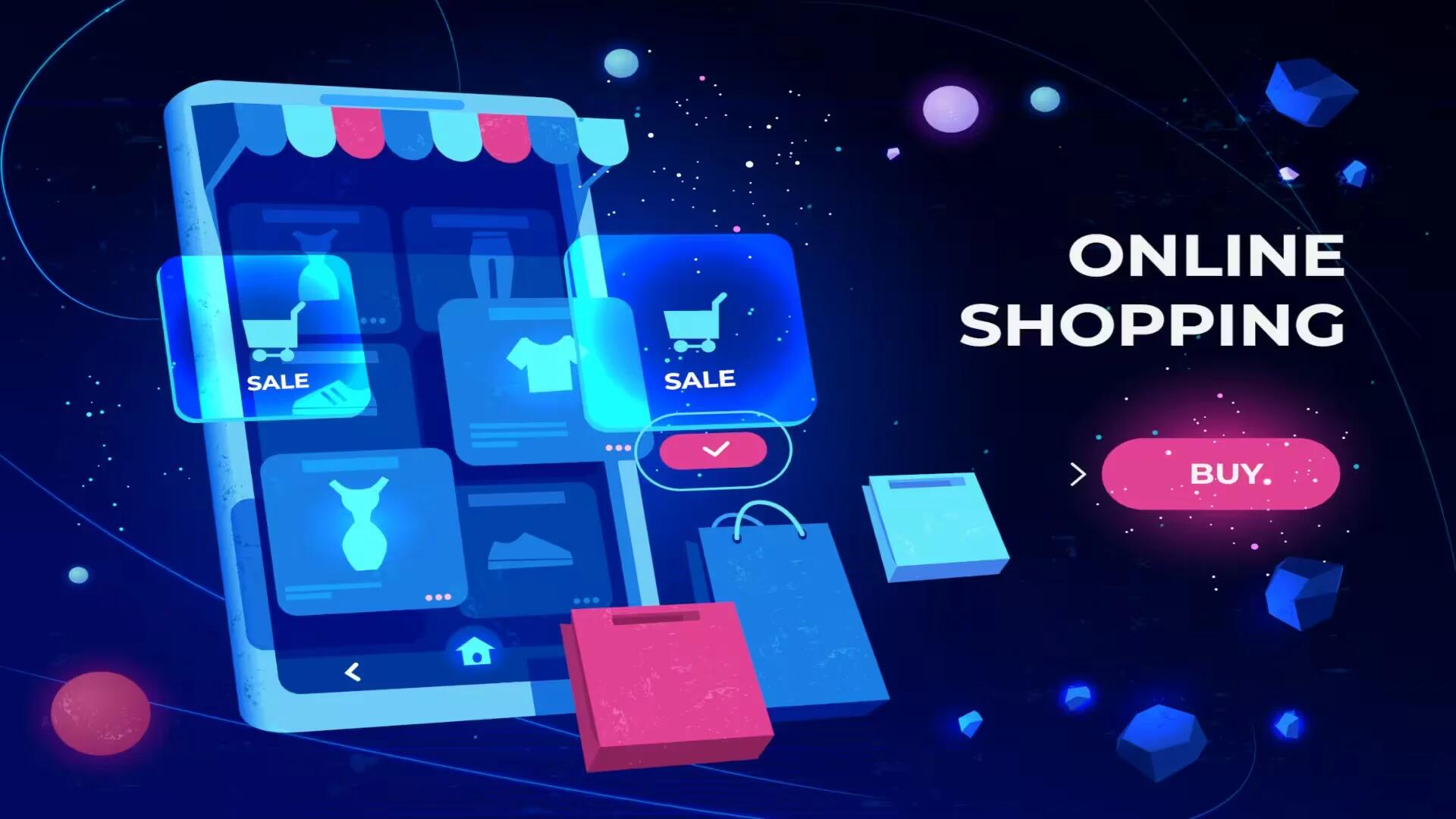Creating Your Brand: Tips and Tools for E-Shops

Online shopping is hardly a novelty, especially since the pandemic introduced many of us to the joys of ordering almost anything one can dream of with a few clicks or taps. You would think running an e-shop would be easy since billions of people worldwide and more than 80% of Americans are not strangers to the virtual shopping cart, and you would be wrong.
It feels like there are far too many shops fighting for the same customers, regardless of niche. What can you do to stand out? Rather than merely running an e-shop, start building a brand. But what exactly is a brand? How can you grow yours? Which tools should you use? Find out everything you will need in our comprehensive guide.
What is a brand, and why do you need one?
In marketing, a brand is a company or product that leaves a distinct impression on consumers. Everything from the name & logo through the choice of colors & packaging to the way you interact with your customers comes together to create a one-of-a-kind identity that is easy to distinguish from others.
Brands let you stand out from the crowd. A powerful brand can help companies take over parts of saturated markets and cultivate a loyal customer base. It also creates brand equity, i.e., the premium a company can command for its products or services over the competition based on recognition & clout.
Investing in your brand opens up multiple growth avenues. The most successful brands become household names with global outreach and devoted customers who will stand by them in trying times. The better-known your brand, the easier it is to get new customers or partner with other companies.
At some point, the media starts approaching you for coverage instead of vice versa, and organic search engine traffic snowballs. With incentives like these, creating a brand should rank high on your priority list.
How should you approach building your brand?
While a few brainstorming sessions might be enough to lay the groundwork, building a brand is a long and multifaceted journey. Here are the broad strokes of what that journey entails.
Discovering your audience
The first crucial step in building up a brand identity is to get a sense of the status quo. After all, you would not want to spend time and money branding a product someone else has already perfected. Do the research legwork first, then concentrate on developing a brand people will actually want to engage with.
It is a good idea to examine what the competition is doing and what customers are saying about them. Do any complaints consistently pop up? Can you improve on a product’s features and provide better value? Is there a need that existing competitors are not satisfying that you could satisfy?
Favorable answers to these questions will help steer your brand in the right direction even before it leaves the drawing board.
Products that sell themselves
Once you are armed with the knowledge gleaned from the first step, it is time to create the unique value your brand will provide. That means developing a product or service that goes above and beyond. For example, an eco-friendly brand might want to design a product and packaging that is 100% biodegradable.
Whatever you are offering, make sure it is of top-notch quality. It is better to start with a single product and grow slowly than to flood the market with a lot of sub-par stuff. Customers dislike low-quality products, so they do not buy them. Do you know what customers hate even more? Products that used to be great but have dropped in quality.
What is in a name?
An appropriate name is crucial to establishing your brand’s identity. Even more so than logos and color schemes, names pop out whether someone is browsing a website or watching an ad. Your brand name is also the first thing customers will mention when recommending your products to friends. Word-of-mouth and a catchy name are an unbeatable combo!
Picking a name is a good place to start thinking about your brand’s core values. You can solidify them with other brand elements, but a name may already give prospective customers an idea of what you are about.
Narrow the list down to a few favorites and get input from colleagues and friends. Most importantly, make sure there are no brands with the same or too similar a name. Even if your niches have nothing to do with each other, the bigger, more established name will always steal a part of your thunder.
A Logo to Remember
E-shops rely on recognizable visual cues to stand out. A logo is the most powerful one. It is the visual embodiment of your brand. It is a symbol for fans to rally around and potential customers to recognize and want to learn more about.
When designing a logo, decide what emotions you are going for. Maybe your brand is playful and carefree. Go with bold letters and even bolder colors! Does your brand speak of luxury and exclusivity? An elegant font with minimal ornamentation is the way to go.
While the result might sometimes look simple, designing a logo is both a craft and an art form. You could come up with your own, but it might be better to hire a professional instead. Take a look at the competition’s approach, but balance industry conventions with a recognizable visual identity.
A website to immerse yourself in
Online marketplaces like Amazon control the lion’s share of e-commerce traffic. Opening up shop in one is a viable avenue for growing your business, but it should not be your primary one. It is harder to express yourself and draw attention to such platforms. You are also at the mercy of their whims, and a single policy change can endanger your entire operation overnight.
That is why establishing a standalone website is a must. It adds credibility while serving as the perfect place to solidify your brand identity. Your site should welcome visitors with an attractive design and a logical layout that they will want to explore.
Your products should be a cut above what visitors expect from brick-and-mortar retail chains. Have your site reflect this. Proudly showcase your wares and explain what makes them special. Add an “About Us” page that showcases your story & mission. Include pictures of you & your team to give the abstract company a human face.
Living the life
Stores sell things; brands sell ideas. You will have far more success if you tie your products to a lifestyle that the people who buy them aspire to. Doing so is also a great way to offer value, whether a visitor ends up purchasing something or not.
Let us assume you are selling brewing supplies to craft beer enthusiasts. Other than your catalog, your site could offer interviews with brewers, feature brews created using your equipment, and share recipes. You could also set up a forum or Discord server that attracts like-minded customers and organically creates a community around your brand.
Finding your voice
There is more to a brand’s identity than logos & color schemes. If you want to engrain your brand in people’s minds, you have to maintain consistency.
On the one hand, this means keeping true to your visual identity and interaction style, regardless of the medium. Once you have settled on your brand’s colors, font, etc., stick with them on the website & social media, in your email campaigns, and in merchandise – you get the picture. If your website copy is bubbly and energetic, keep the vibe going when interacting with your audience or launching a new marketing campaign.
Consistency also means applying your brand’s ideals to more than just aesthetics. If your fashion brand advocates empowering women, take pains to ensure that any women who make the clothes also receive fair pay. Is your brand all about minimalism? Reflect that through simple packaging and by avoiding practices that harm the environment.
Treating customers as partners
We cannot overstate the value that loyal customers bring to your company. Enticing a repeat customer to buy another product is exponentially easier and cheaper than attracting a new one.
Seasoned customers are also more willing to give your new products a shot. Most importantly for growing awareness, repeat customers are the best brand ambassadors who spread the word due to conviction and experience rather than marketing.
Of course, you should not neglect the newbies, either! How do you attract them? First, develop a kick-ass product. Second, spread the word. Third, be consistently transparent in all your actions. That means responding to questions on social media and resolving issues quickly & professionally. You will gain massive respect by acknowledging faults and listening to your customer base when it is time to improve a product or design a new one.
Giving back
Once your brand gets some attention, it will fall under public scrutiny. Customers care about companies’ moral principles more than ever before. Did you know that more than 70% of Millennial and Gen Z customers will not do business with a company if it does not engage in some form of charitable work?
Doing so is an opportunity to give back to your local community while reinforcing your brand message. An e-shop selling sports equipment could sponsor a local kids’ team, while a business that offers learning tools & activities could organize local science-related workshops. The sky’s the limit, and everyone wins.
What Tools Do You Need?
Online entrepreneurship is thriving, as is a whole industry built around supporting it. The right tools will help you streamline the tedious aspects of nurturing your brand while giving you a leg up on the competition.
Customer Relations Management (CRM)
A good CRM is essential for retaining customers and converting leads. Its basic form is a database of customers who have purchased something, signed up for a newsletter, etc. More advanced CRMs let you group customers into categories and design different strategies to engage with each.
CRMs also offer insights into customers’ behavior. They track past purchases and user engagement on your website. Leveraging a CRM’s versatility helps you discover how well a product is performing, create more effective targeted campaigns, and automate customer support. CRMs also integrate with most other tools on the list.
Content creation tools
Do you have a ground-breaking business idea but lack the budget to hire a professional designer to take care of your brand’s aesthetics? Several online tools make picking color palettes, designing logos, and creating templates approachable for non-designers.
Similarly, blogging tools streamline adding written content to your site to make it more engaging. While not as crucial for all brands as the steps above, keeping an active blog can boost search engine results and add credibility by sharing your expertise.
Marketing & social media management
Your brand will die a quick and silent death if you do not maintain a social media presence. Coordinating your efforts across multiple platforms can become overwhelming, which is where social marketing management tools come in.
Planning campaigns in advance is their greatest asset. You can set up tweets, snaps, and other types of social media posts weeks in advance. This lets you bang out a new campaign when you have the time and watch it unfold while you are busy with other projects.
Email has been around forever, yet it still ranks highly among the most effective online marketing mediums. After all, people who gave you their address are more likely to care about your brand than someone who randomly saw a Facebook ad.
Email campaigns are a proven way to get closer to customers and reward their loyalty. A carefully crafted message is ideal for making new customers feel welcome, while discount codes for subsequent purchases will have them coming back for more. Like their social media counterparts, email marketing tools largely automate campaign creation.
Web scrapers
We already mentioned how keeping tabs on the competition is beneficial for identifying your niche and setting your brand up for success. Much information about them is likely freely available online, but collecting and making sense of it is not straightforward. That is where web scrapers come in.
Scraping can provide you with valuable information about other products and strategies, and it is especially useful when you are scraping Google. For example, tracking a competitor’s price history lets you predict when a product might next go on sale and beat them to the punch. It helps to set baseline prices that strike a balance between offering the best deal and remaining profitable.
Web scraping is also useful for gauging interest in your brand and how the public perceives it. Scraped social media posts and reviews are the basis for sentiment analysis. This research technique indicates people’s attitudes toward your brand and can alert you if they start to shift.
Analytics tools
It is natural to be passionate and emotionally invested in your brand. However, nothing beats the logic of numbers when it is time to make informed business decisions. They shed light on everything from user demographics to how appealing your site is to how customers engage with your product. Ignore them at your own peril.
Conclusion
Despite the competition, it has never been easier to start selling something online. Whether your e-shop will sink or swim depends on many factors, with luck playing no small part. Even so, developing a strong brand goes a long way toward ensuring your business and ideas will come out on top. We hope that following our advice will bring you a step closer to that goal.









 RSS - All Posts
RSS - All Posts